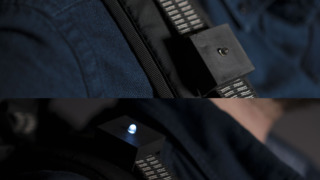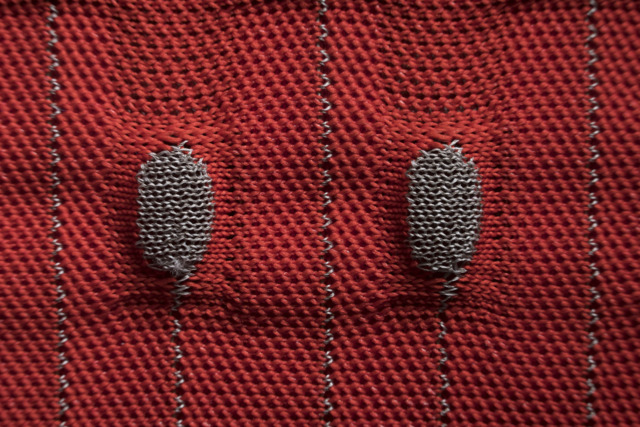SensorKnits: A New Approach to Wearable Tech
As part of our coverage of textiles and apparel, we look for interesting developments, both in the more conventional textiles and apparel market as it transitions to a more digital approach, as well as developments in technical textiles.

As a lifelong knitter, I’ve been interested in how this technique for creating fabric can be used for more advanced purposes. We’ve published a few articles on this topic. For example, we wrote about how 3D knitting was used in the development of Nike’s FlyKnit shoe. We also wrote about the effort to bring knitting mills back to Brooklyn by Tailored Industry by leveraging 3D knitting to eliminate most of the labor-intensive finishing processes required with conventional knitting. And we have written about developments in wearables that use conductive materials to add functionality to fabrics, including the work being done at MIT on fiber computing.
I recently came across an interesting project underway at the MIT Media Lab: SensorKnits. It uses a combination of digital knitting machines—a highly programmable manufacturing process—with conductive yarn to programmatically control the resistance of knitted fabric.
The group worked with three classes of textile sensors exploiting resistive, piezoresistive and capacitive properties of various textile structures enabled by machine knitting with conductive yarn. The conductive yarn they chose to work with was a silver-coated conductive yarn obtained from China; there are likely many other choices that could be made as well, including the graphene-embedded yarn from Kyorene as we have also written about.
3D printing conductive materials on fabrics for making sensors and actuators is another method used in the past. This approach may lack longevity and durability, especially when used in a wearable that must sustain both motion and laundering. Embedding conductive fibers into woven fabrics is another means. A good example of this is the Levi’s smart jacket developed through a collaboration between Levi’s and Google’s Jacquard project. In the case of the smart jacket, it connects to your phone via Bluetooth and was designed to make it easy to access certain functions while riding a bike without needed to look at your phone. It gets around some of the issues with laundering by including a removable cuff dongle—just remove the dongle and throw the jacket in the wash.
The team notes that in addition to weaving, embroidery has also been used to add conductive materials to fabric. Recent advances in machine knitting allows the design of a multilayer or even 2.5D structure using multiple materials. The team states that machine knitting is more scalable than these other approaches, as well as more durable than conductive printing on fabrics.
Here are three examples that were presented as part of their research:
1. Customized belt rheostat sewn onto a backpack with a 3D-printed enclosure that covers the buckle, and a voltage divider circuit that changes the brightness of an LED. This can act as a safety mechanism, with the backpack emitting light, for example, when a bicyclist is riding in the dark.
 Customized belt rheostat sewn onto a backpack. Image Credit: Daniel Oran.
Customized belt rheostat sewn onto a backpack. Image Credit: Daniel Oran.
2. A knitted tablecloth for indoor use with 12 channels, each having a rheostat embedded. Each rheostat can have a different function; for example, changing the color of the fabric or controlling lighting via connection to a microcomputer, which in turn broadcasts signals to a lab server, controlling both the light and ambiance of the space.
3. A musical instrument folded into a handbag which can be opened up, connected to a speaker and played. The bag can be a protective storage base for the speaker, which in their case was battery-powered.
 The process of unzipping and flattening the handbag into an input of a musical instrument. Image Credit: SensorKnits Project.
The process of unzipping and flattening the handbag into an input of a musical instrument. Image Credit: SensorKnits Project.
The image below is a close-up of the sensors which are used as “keys” to operate the instrument.
 SensorKnits sample. Image Credit: Daniel Oran.
SensorKnits sample. Image Credit: Daniel Oran.
What’s Next?
The SensorKnits team plans to continue its research to, among other things:
· Explore more sophisticated knitting machines to enable sensors to be embedded in, rather than placed atop, the knitted fabric.
· Improve the ability to interface these specialized knitted fabrics with other electronic components such as batteries and microcontrollers. For example, they identify the possibility of knitting “sockets” that make these connections between wire and yarn easier. Other connectivity potential includes using buckles, buttons or conductive Velcro.
· Adapt their structural design methodology to other functional yarns. This might include heat-responsive, thermal chromic yarns to create interactive textiles at the stitch level.


